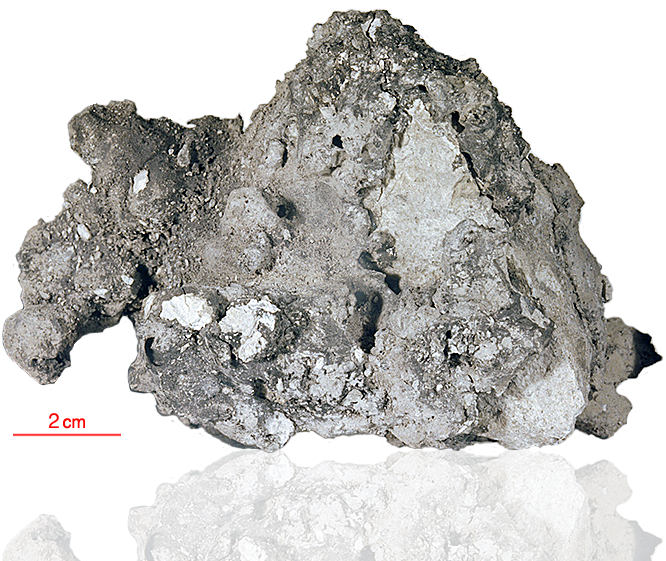
Fact sheet
67975 is a fragmental, polymict breccia with numerous lithic clasts cemented together by a dark glass. It is irregular in shape with two main lithologies: a pale grey, feldspar-rich breccia and a frothy, clast-rich glass. The clast population is diverse and interesting. This rock contains relatively mafic, microporphyritic melt breccia and rare pristine alkali gabbronorite, in addition to cataclastic anorthosite and granulitic breccias. The glassy portion of 67975 is made up of thick (5 cm) clean glass. Crystallites of plagioclase extend from the glass/breccia contact into the glass, although this is not obvious in our thin section.
The sample weighed 447 grams before analysis. A large zircon in alkali gabbronorite has been dated at 4.339±0.005 billion years (U/Pb).
Further details of this and other Apollo samples are here: http://curator.jsc.nasa.gov/lunar/
The Apollo 16 landing site was in the hilly region around Descartes crater in the lunar highlands. The landing spot was chosen to allow the astronauts to gather geologically older lunar material (Descartes Formation and the Cayley Formation) than the samples obtained in the first four landings, which were in or near lunar maria.
The mission lasted 11.1 days, with a stay on the lunar surface of 71 hours. The crew were on the lunar surface for 20.2 hours during which they traversed approximately 27 kilometers and collected approximately 96 kilograms of samples.
Apollo 16 was launched on 16 April 1972.






